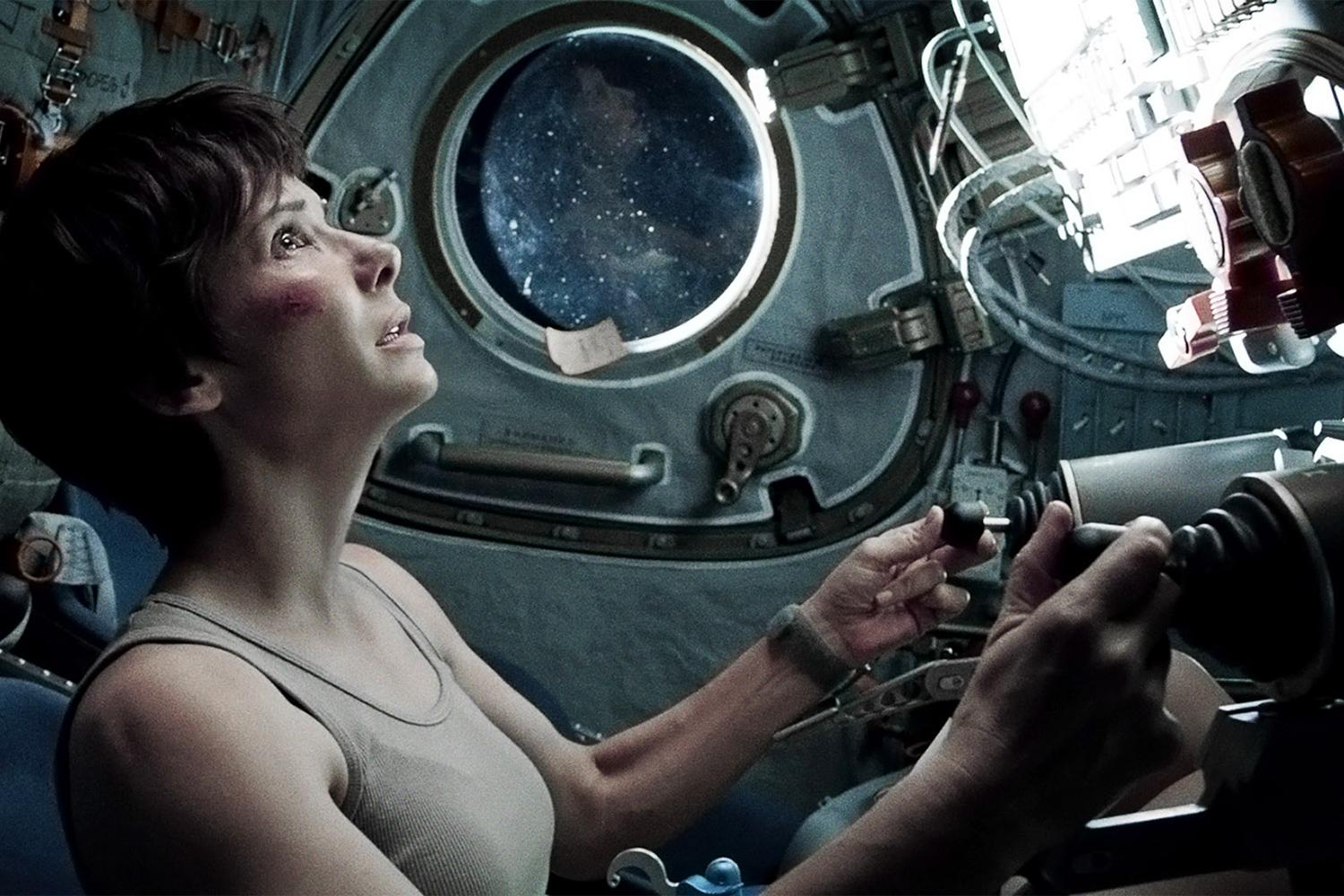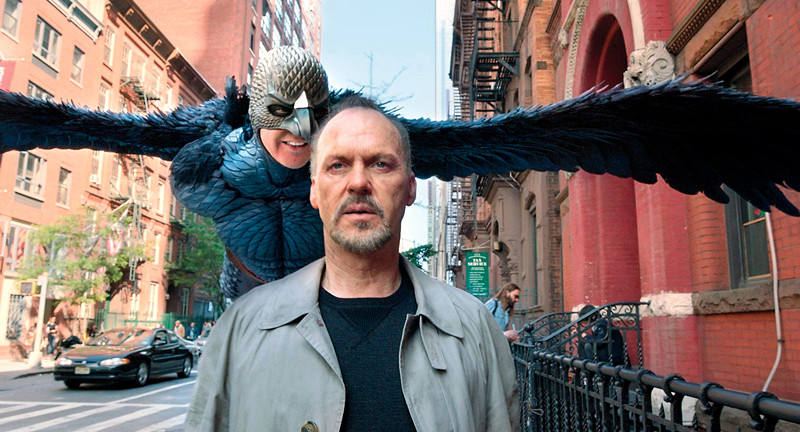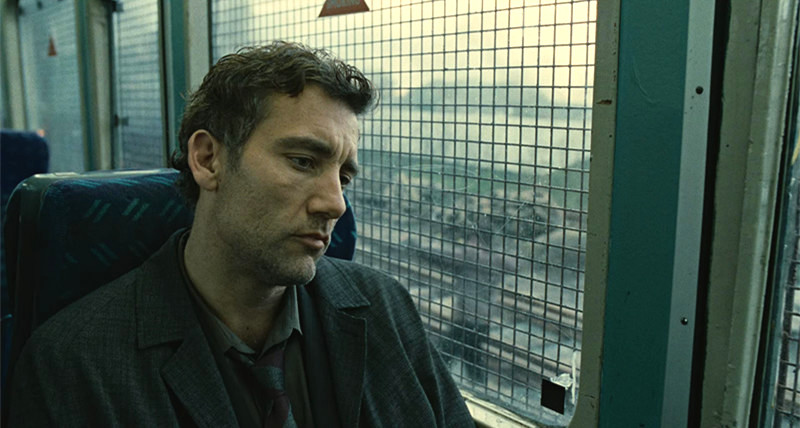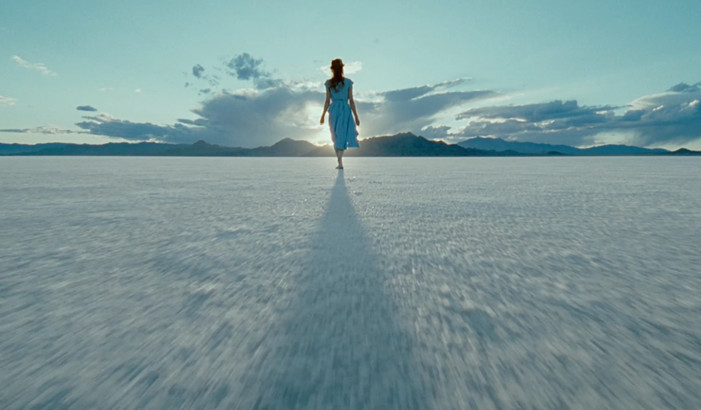5. Gravity (2013) – Dir. Alfonso Cuaron
Dr. Ryan Stone is an astronaut-engineer on her first NASA mission to aid in servicing the Hubble Space Telescope. Whilst conducting her repairs the team is struck by a hurtling mass of space debris, inadvertently set in motion by a Russian Missile Strike, which eventually kills all but Stone. Terrified and incomparably alone, she must now navigate her way back to earth.
The intimidating, unforgiving and of course cinematically inaccessible setting – outer space – required Lubezki to pioneer an entirely new style of hybrid digital filmmaking. This involved Chivo’ being heavily involved with the animation team in creating, designing and lighting the virtual environments which we see in the film.
These images were then projected via a colossal LED lightbox which had the actors suspended within, allowing the camera team to light the real-life action perfectly and enabling the actors to act in seamless sync with the animated action unfolding around them.
The great creative freedom afforded to Lubezki in the making of Gravity was outer-space’s total lack of bounds. With no physical limitations to what or where the camera could do or go, Chivo’ was able to mimic the astronauts’ movement with the floating, roaming long-takes that makeup the movie.
The common criticism leveled against Gravity is it’s allegedly weak, predictable narrative; but a film this viscerally exhilarating and visually stunning provides its own rationale.
4. The Revenant (2015) – Dir. Alejandro G. Iñárritu
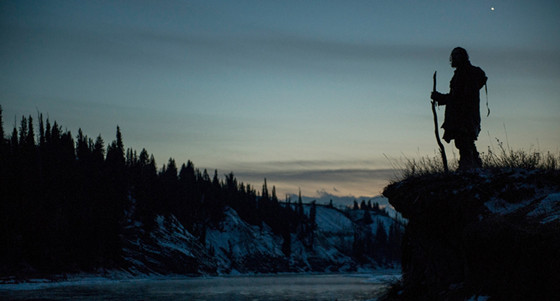
“The Revenant” shooting suffered immensely from freezing conditions, which has been pointed out by Lubezki as some sort of necessity to better translate the experience. They also used strictly natural light because they wanted the audience to see exactly what they saw, and hopefully, find it as real as it was. (All the extra light they used was in a campfire scene)
Ideally, the picture was meant to be shot on film, but the format wouldn’t capture the scenes exactly as they were hoping, mostly because they had very little time of daylight and often shot at dawn and dusk. Instead, Lubezki carried the Arri Alexa 65mm digital camera with 12 to 21mm lenses.
As this film’s proven, there’s nothing Lubezki won’t try. As an adaptation from a novel with the same title, “The Revenant” attempted to bring originality to the script, which made the cinematography stand out a lot more.
3. Birdman (2014) – Dir. Alejandro Gonzalez Inarritu
Riggan Thompson is an old, washed-up Hollywood actor who’s long forgotten fame came playing the not-so-fictional superhero, Birdman. Thompson, fittingly played by Michael Keaton, is on the road of redemption and hopes his Raymond Carver adaptation can wow Broadway critics and prove to the cruel world of performing arts that he is an artist.
As pressures mount from family, critics and sickeningly pretentious method-actors, Thompson gradually begins to lose his grasp of reality and the lines between his current self and his desired self become increasingly blurred.
Set in the cramped, maze-like backdrop of a backstage-Broadway theatre, Lubezki’s camerawork surges round narrow corridors, drifts through claustrophobic dressing rooms, and, at one point glides the length of a vibrant Times Square, wonderfully purveying the maddening world of drama production and excellently showcasing Lubezki’s rein of artificial lighting. What really makes this cinematography so truly stunning however, is the fact that it is laced together into what seems a single, one hundred and thirteen minute tracking shot.
If there is one criticism of Birdman, it is that Lubezki’s searching steadi-cam-erawork is so gaspingly beautiful and fully immersive that it detracts from the narrative, affecting the spectator’s ability to fully digest the plot. But what is perhaps a criticism of Innaritu can only be seen as a fine compliment to Chivo.
2. Children of Men (2006) – Dir. Alfonso Cuaron
A turbulent thriller set in a dystopian Britain, Children of Men documents a human race on the brink of extinction after an unknown genetic defect has rendered all humans infertile for the past eighteen years. The film follows Theo, an estranged bureaucrat who is enlisted by a left wing activist group to smuggle a young African woman out of Britain to the mythical sanctuary of ‘The Human Project’, a supposed scientific research organization devoted to curing human infertility.
What is perhaps most stunning here is Lubezki’s constant use of long-takes. One memorable scene involved him designing and building an enormous, fiendishly complex AFV-like rig which engulfs a moving car; enabling him to shoot a 9-minute, one take action sequence from within.
Ravaged urban settings and barren rural wastelands are excellently captured with documentary-style steadi-cam realism; whilst a palette of bleak whites, stressed blacks and menacing greys damningly paint the run-down, dingy misery of a Britain in turmoil.
1. Tree of Life (2011) – Dir. Terrence Malick
A collection of moments and memories spanning 40 odd years, Tree of Life is a philosophical tale revolving around the tragedies, blessings and growth of one Texan family. Although somewhat hard to define, the spine of the narrative follows architect Jack O’Brien as he reflects on the religious, spiritual, natural and existential meaning of his brothers’ death some 20 years previously.
Akin to his work on Malick’s previous film, The New World, Lubezki’s cinematography here is a serene spectrum of contemplative, and occasionally vivid hues. Looming skyscrapers, stern lectures, crashing oceans, broiling lavas, whimpered mournings, whispered warnings, spurting geysers, roaring judgements, planetary shiftings and prehistoric creatures makeup a certainly divergent but unquestionably beautiful intertwinement of shots.
In a film that feels so organic, reflective and philosophical it is Lubezki’s insistence on using only natural lighting that represents his commitment to not merely the image, but the narrative as well. If they were ever unable to find the right natural light during production they’d either shoot another day, have Malick rewrite the script or even have an entire window installed.
Author Bio: Tom is from Brighton, England. Currently studying film production at university, he wishes to pursue a career in filmmaking and arts journalism.
